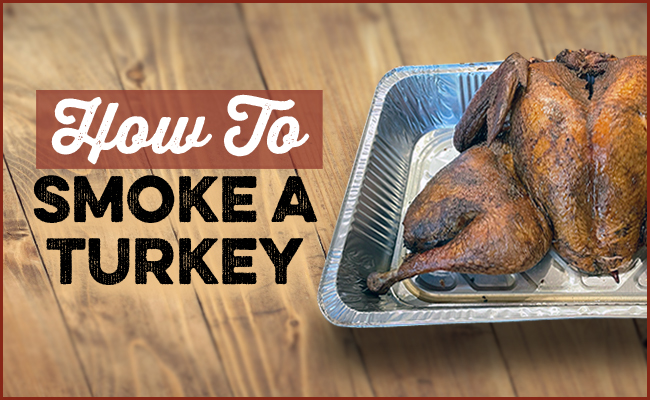
Last year, I got a wood pellet smoker, and it’s really changed the game for our home cooking. I use it several times a week now; brisket, burgers, chicken, steak, veggies — you name it, and I’ve probably smoked it. But my proudest use so far was smoking the turkey for our Thanksgiving dinner last year.
It was a big hit with everyone. The bird came out juicy, with a deep, golden brown skin you only get from smoke and butter. The meat had a nice smoke ring and plenty of flavor, thanks to a dry brine that does most of the work while you sleep.
If you’ve never smoked a turkey before, it’s easier than you think. I learned from my friend and BBQ master Karl Engel. Here’s the idiot-proof process Karl recommends.
Pick the Right Bird
If you’re serving more than a dozen people, it’s better to cook two smaller turkeys (12–14 pounds each) rather than one massive 25-pounder. Big birds tend to dry out before the inside finishes cooking. Two smaller turkeys will cook faster, more evenly, and taste better.
If you decide to go with a larger turkey, you’ll want to spatchcock it to ensure even cooking. I’ll show you how to do that below.
Thaw It Completely
If you bought a frozen turkey, make sure it’s fully thawed before smoking. Take out the giblets and neck, rinse the bird inside and out with cool water, and pat it dry with paper towels.
Dry Brine (The Secret Weapon)
A dry brine gives you juicy meat without the mess of a wet brine. Here’s the mix Karl recommends:

- 2 cups kosher salt
- ¼ cup black pepper
- 3 tablespoons dried herbs (any “herbes de Provence” blend works great)

Liberally cover the turkey inside and out with the dry brine mixture. Don’t be shy here. It’s hard to overdo it. You want that bird well-coated.
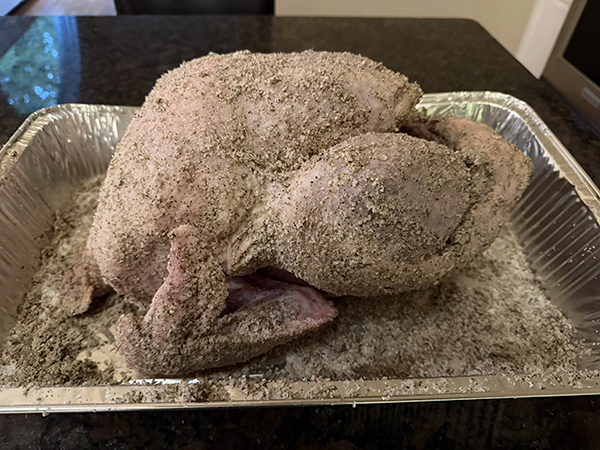
Place the turkey in a large foil pan and leave it uncovered in the fridge for 24 hours. If you don’t have fridge space, you can use an ice chest. Fill the bottom with 2–3 inches of ice, set the pan on top, and keep an eye on the temperature to make sure it stays cold.
Rinse and Spatchcock
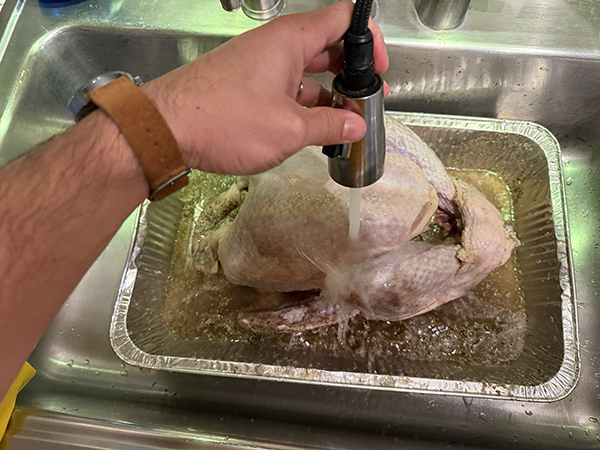
After 24 hours, rinse the turkey under cold water, inside and out, and pat it completely dry.
If you’ve got a big bird (18+ pounds), you’ll want to spatchcock it. That’s just a fancy way of saying “remove the backbone and flatten it.” This helps the turkey cook faster and more evenly.
To spatchcock:

Place the turkey breast-side down.

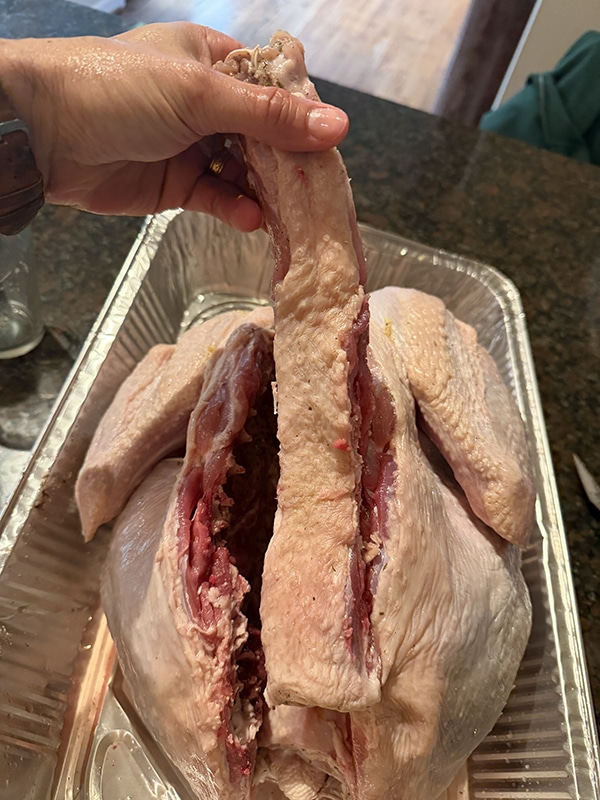
Using kitchen shears, cut along both sides of the backbone and remove it (save it for stock).

Flip the bird breast-side up and press down firmly on the breastbone until you hear a crack and the turkey lies flat.
Now you’ve got a bird that will cook evenly and look great when finished.
Butter It Up
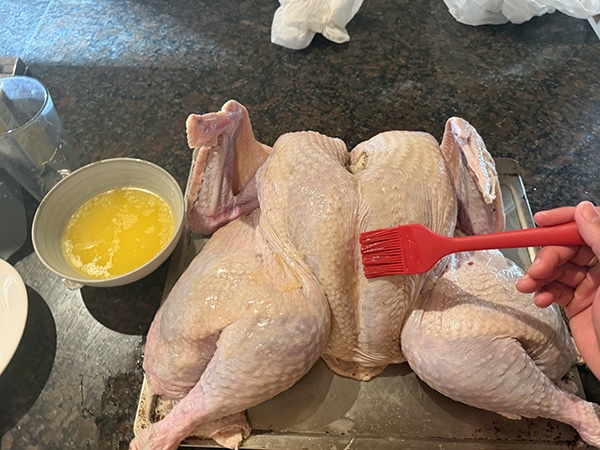
Slather softened butter all over the turkey. Put some inside the cavity. The butter helps the skin crisp up and adds flavor.
If you want to level up, mix your butter with minced rosemary and sage.
Fire Up the Smoker
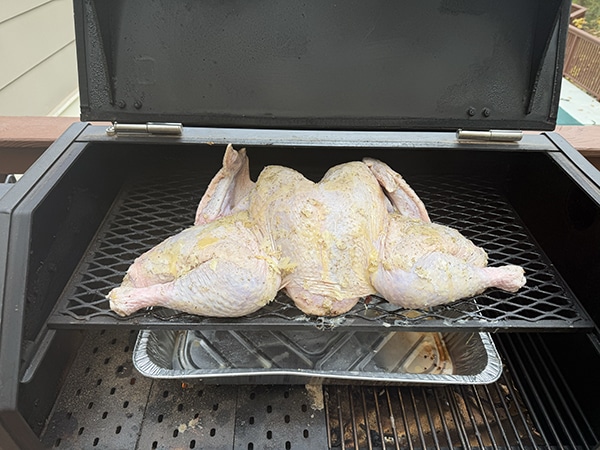
Heat your smoker to 300°F. That’s a little hotter than some people like to smoke, but Karl has found through experimentation that if you go lower, you usually end up drying out the turkey. 300°F seems to be the sweet spot for a juicy bird with plenty of smoky flavor.
I used a mix of oak and apple pellets, but hickory, cherry, or pecan work great too.
Place the turkey breast-side up on the smoker grill, and place a foil pan beneath it to catch the drippings for gravy. If you’ve spatchcocked your turkey, lay it flat, skin side up.
Plan for about 3½ to 4 hours of cooking, or until the internal temperature reaches 165°F in the thickest part of the breast and at the junction of the leg and thigh.
Baste With Butter
While the turkey cooks, melt three sticks of butter in a saucepan and add a few sprigs of rosemary and sage (fresh if you can get them). Every hour, baste the turkey with this butter mixture. It will help crisp the skin and give it that dark mahogany finish that looks straight out of a Norman Rockwell painting.
Rest and Carve
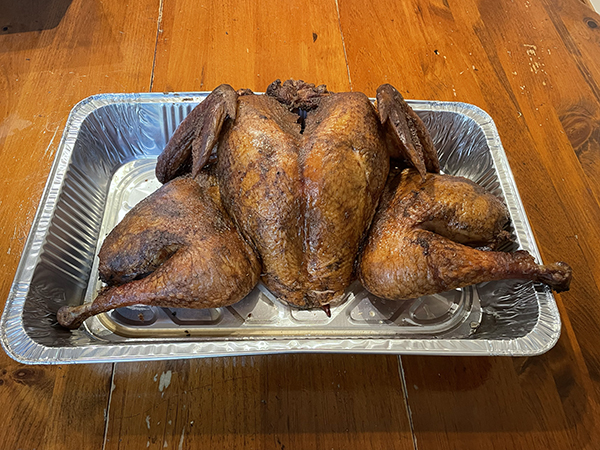
Once your turkey hits temperature, pull it off the smoker and let it rest for 20–30 minutes. This allows the juices to redistribute and makes carving easier.

Look at that smoke ring.
Then carve it up (see our guide on how to carve a turkey) and enjoy. The meat should be tender and juicy with a subtle smoky flavor.
Once you smoke a turkey, you may never go back to roasting. It’s that good.





